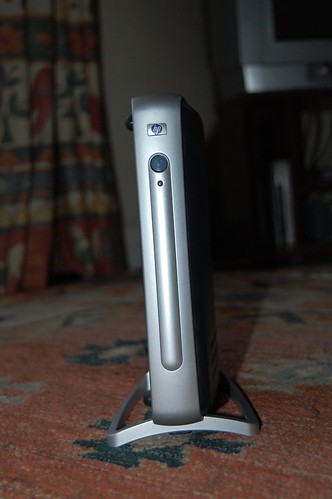Chris Lyman, the CEO/Janitor of Fonality, made an insightful post on his blog regarding entrepreneurs and aspiring entrepreneurs here. I don't have much to add -- I thought it was good food for thought and wanted to file it somewhere so what better place then on my blog.
I think it's a good idea to fill your thoughts constantly with lots of inputs from all over. Just don't take any one of them too seriously. Consider everything and then decide where you want to go, on your own.
Here's an excerpt from Chris's post:
-jrFor 10 years now people have approached me with business ideas, and asked: "What do you think of my idea?"
[...]
And I have always taken their "What do you think of my idea?" very seriously. After all, asking for an opinion on something that you have labored over is difficult - it's a moment of vulnerability as you open yourself up to a potential battery of cerebral criticism and intellectual pugilism. It's not easy ...and I know this.
Thus, I listen to their pitches, I read their business plans, and opine. I try to give thoughtful advice on the "what-ifs" and the "how-tos" and I introspectively incant my "lessons learned."
But, it never sits right with me. And, slowly I have come to hate this question. And, finally I know why.
The entire act of questioning before leaping is fundamentally opposed to the true spirit of entrepreneurialism. Being an entrepreneur is about doing something NEW that has NEVER been done before, or doing something old in a totally NEW way. You just don't build a bad-ass business by being a me-too. In short, you gotta bring the NEW to outdo the OLD and the NEW can never be known because it hasn't happened yet and therefore ANY attempt to discuss the new as if you know what the hell you are talking about is an ego-trip and I don't want a ticket to that ride.
Let me illustrate my own idiocy at predicting the future:
In my last company, I had a Director of Sales named Jon Venverloh. One day, in late 1998, he showed up to work and said he was moving up north to take a sales job at Google. I laughed at him and asked him why the heck he would go to a company with no revenue and no revenue model. Remember this is 1998. He said: "I like Northern California better and I can ride my bike." Believing he was making a lousy career move, I wished him luck. Well, I just googled (hehe) Jon and he is currently listed as an Executive in charge of Federal Sales for Google, Inc.
Go figure. Nobody knows who is going to be the next Google. Least of all me. And the mere fact that you are asking means that you are doubting yourself and doubt is what you CANNOT have as you strive to create the NEW. Don't let the opining and the opinionated slow you down.

